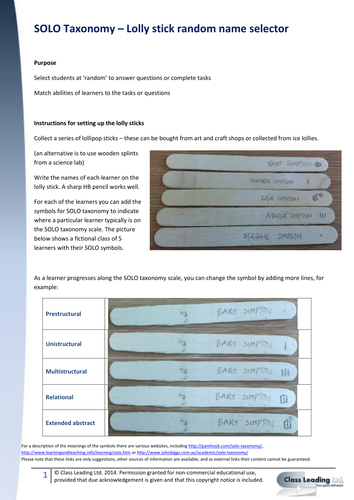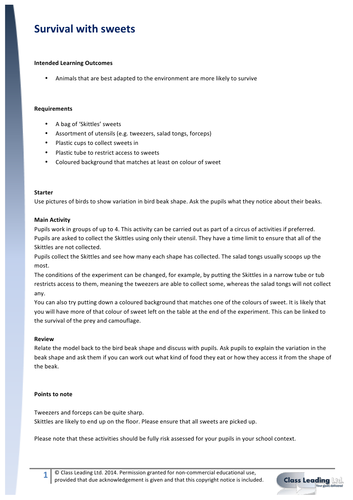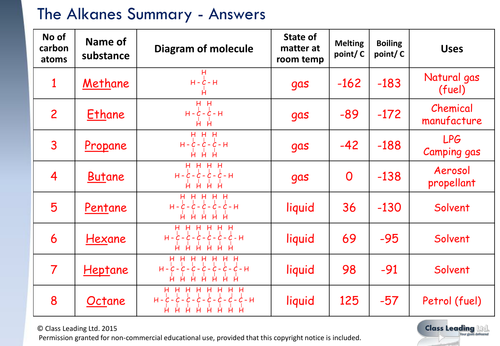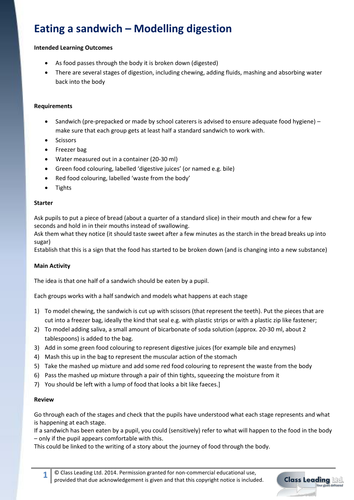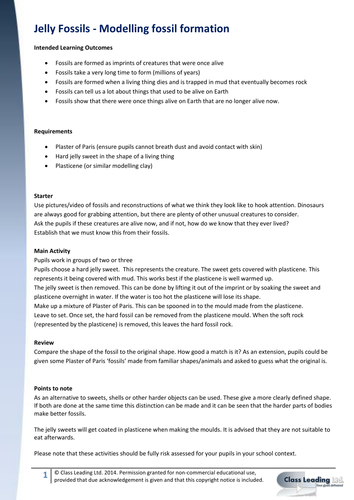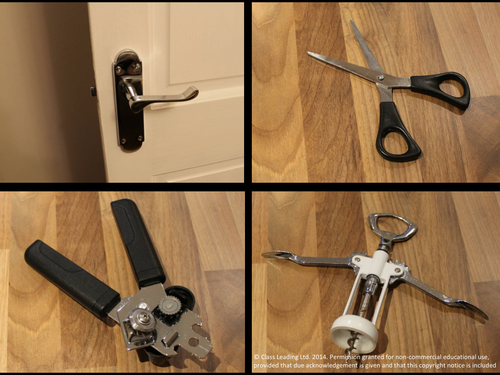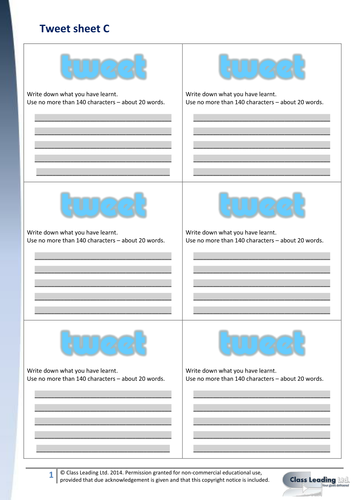314Uploads
260k+Views
194k+Downloads
All resources

Electricity: Modelling current in series and parallel circuits
This model is an animated PowerPoint slideshow. It shows current as a flow of charge around series and parallel circuits.
It allows you to compare current flow in series circuits with one and two lamps. It also allows you to increase the potential difference for the circuit. This allows you to compare current flow.
It also shows two lamps in parallel, allowing you to see the current before and after the branches in the circuit.
The model is quite simple to allow pupils to make sense of the current flow model quickly and help them to understand how it works.
A modelling lesson that was originally designed alongside this activity is available to download for free at https://www.tes.com/teaching-resource/resource-6337303

GCSE Physics/ Science flash cards (suitable to make at home)
These are flash cards for GCSE Physics/ Science. They cover key facts that pupils need to learn.
They are designed to be suitable for pupils to print at home and make up the cards.
They include advice as to how to use the flash cards to help them to make the best use of their time when learning.
Flash cards sets included are:
Physics equations that need to be learnt
Circuit symbols, including some common questions linked to the symbols
Force and motion sketch graphs
Designed for AQA Science.

Workload Reduction - GREAT lesson planning
This is a lesson template and guidance document and is designed as a workload reduction tool for whole school use.
Many different subject areas and different phases have different requirements of lesson and lesson sequence planning. Across all subjects there are some common areas that are features of effective teaching, regardless of the subject. These are the features included in GREAT lesson planning.
This could be used as a short-term (lesson plan) or medium-term plan (scheme of learning that covers a sequence of lessons) depending upon the subject or context.

Greenhouse Effect & Solar System (editable)
This activity follows on well from the Greenhouse effect starter. Based on interpreting data about planets in the solar system, it leads learners to the conclusion that Venus is hotter than it should be due to CO2. There are two levels of activity, the more demanding one explores the role of photons/light/radiation in heating planets. This activity was originally designed for 21st Century Science unit P2.
Please note that this is an editable resource.
Key words: greenhouse effect, atmosphere, CO2, carbon dioxide, global warming

Food chains & energy transfer (updated)
This is an editable worksheet based activity that includes some higher order thinking to explore the ideas around energy transfer in simple food chains. Two versions are included, one with revised GCSE (1-9) grades, the other without. (please note that grade indications are only approximate). Why not try getting learners to choose a selection of questions to answer (e.g. do Q1-4 or Q3-8) An answer sheet is included.
This resource was originally designed for OCR 21st Century Science unit B3, but still applies across a range of exam specifications.
Keywords: energy, transfer, food chain, efficiency

What killed the Mammoths (editable)
This is a collection of resources that would work well as a lesson. A lesson outline is provided showing how the resources might be used together. There is an email designed to set the scene and for use as as a ‘hook’. There are also sheets for learners to summarise their learning (tweet).
You may want to supplement the resources with pictures of a woolly mammoth (link only due to copyright restrctions) and video ‘footage’ e.g from Ice Age movie.
This was designed as lesson for a KS3 nurture group although would be suitable for KS2 or other KS3 groups with adaptation.
Please note that this is an editable version. A free, non-editable version is also available.

SOLO Taxonomy random name selector
This guide explains how you can select students at ‘random’ to answer questions or complete tasks and also match abilities of learners to the tasks or questions. It is a really effective way of differentiating tasks and questions. It offers more flexible ways of selecting names than purely random name generators.

Survival with Sweets
This activity is aimed at supporting Primary Science (particularly those in year 6 in the English National Curriculum). The purpose of the activity is to help children understand the idea of ‘survival of the fittest’ using everyday objects that a primary teacher will be able to get hold of, including sweets. This can be played as a game by children or can also be used by a small group to demonstrate to a whole class.

Classification with Hoops
This activity is aimed at supporting primary science (currently year 4 and year 6 in the primary science national curriculum). In this activity, children are encouraged to look at strategies for classification using physical objects that are accessible to most primary science teachers.

Thinking About - The 3% fat challenge
This activity is part of the ‘Thinking About’ series.
It is designed to provide deep challenge to pupils in terms of their understanding of percentages.
It sets a problem in a work-based context and asks them to explain how they solve the problem. There is also the opportunity to manipulate familiar objects as part of solving the problem.
It is accessible in that pupils can attempt a solution to the problem, yet also challenging as the solution to the problem is not as straightforward as it seems for most pupils.
Many pupils will find percentages challenging and this activity is designed for those who you feel have mastered the idea that percentages involve a fraction out of 100.

Thinking About - Do unbalanced forces cause movement?
This activity is designed to probe preconceptions about the idea that forces cause movement. Children will often think, based on their prior experience of stationary objects that introducing an unbalanced force will make something move in the direct of the force. This activity gives first hand experience of a situation that involves unbalanced forces on a moving object and helps challenge this preconception.

The Alkanes Summary (flipped learning)
This is a collection of separate pdf documents that help learners summarise information about the alkanes.
Each of the different sheets allows for a different level of support and challenge
- Sheet A is totally blank.
- Sheets B and C have fewer sections to fill in.
- Sheet D has all of the molecules drawn.
- Sheets E involves some reading for information and only has a limited amount of information and could be good for the least able.
- Sheet F, many of the answers can be deduced (at least approximately) and can be good for stretching the most able.
It is intended that the activity be carried out as 'flipped learning' so that learners complete this activity before learning about the alkanes and/or fractional distillation.

Thinking About - Coke & Mentos
This activity is part of the ‘Thinking About’ Series.
The sequence aims to think through the investigative process using a very engaging activity. It involves learners thinking through the control and measurement of variables.
It can be used to produce and analyse graphs and think through challenging explanations.
There are also some surprising events for further challenge if different soft drinks are used.
In this activity there is a PowerPoint, an activity guide and making and launching guides (which it is recommended that you laminate!)

Thinking About Goldilocks and the Three Bears
This activity is a context led approach to look at changes over time, in particular how temperature changes as time goes by.
Children find it much more interesting that watching the change in temperature as water cools.
The activity centres around finding that learners will find surprising helping them make progress as a results. There is an engaging start to the activity through a very familiar story.

Planning for Progress Lesson Plan
Use this planning template to consolidate and reflect your thinking when planning lessons. The template is focused on supporting progress for all learners.
When using the plan it is suggested that you begin by populating the ‘Expected Learning Outcomes’ section first, then think about how you will find out what they know already and what you have learned. After this, think about the activities that they will do before, during and after the lesson, and finally everything else.
A word document and a pdf version are included.

Eating a sandwich - modelling digestion
There are two parts to this activity, one is a practical activity to model the process of digestion. The other is a powerpoint slideshow to show what happens to the food on its journey through the body. If using with KS3 then the learning outcomes on the activity plan could also include breaking up of molecules in digestion. If using with KS2 for the new curriculum, the powerpoint will include some terms/slides that you may wish to miss out, so it has been left in an editable form.
Please ensure that you carry out a risk assessment before carrying out a practical activity.

Phases of the moon
In this activity, pupils are at the centre of model that shows how the Moon orbits the Earth and how this leads to the phases of the moon appearing. A description of how to do this is shown. A worksheet for recording the appearance of the moon model is included, with answers.
There are also links to a NASA video showing the phases of the moon, the first 30 seconds of which could be used to hook learners. A second video showing the experiment is also linked.
Please ensure that you have carried out a full risk assessment before carrying out any practical activity.

Jelly fossils - Modelling
In this activity, pupils go through the process of making a fossil of a jelly sweet to show how fossilisation takes place. A description of how to do this is included in the guide. Please ensure that you have carried out a full risk assessment before carrying out any practical activity.

Everyday levers
In this activity pupils can look at the images of levers and think about where the find them and what they do. Either images or real objects (or a combination) can be used with the two sheets, which are differentiated in terms of the number of expected responses and the questions used. Please note that clock (a 'distance multiplier&') is different to the other levers shown (&';force multipliers') and spotting the odd one out and providing a reason gives an extension for more able pupils. Please ensure that you have carried out a full risk assessment before carrying out any practical activity.

Tweet Sheets - Summarising learning
This resource consists of three sheets, each of which is made up of 6 squares that can be cut out and given to learners. They can be used by learners to summarise their learning. This is ideal for the review phase (plenary) of a lesson or before the lesson with a flipped learning (classroom) approach.
There is a plain sheet and also versions to support neater writing by learners using an idea from dyslexia expert Neil Mackay. The highlighed version s help learners form neater letters in a similar way that half-way lined paper does. A grey version is included for B/W photocopying.







